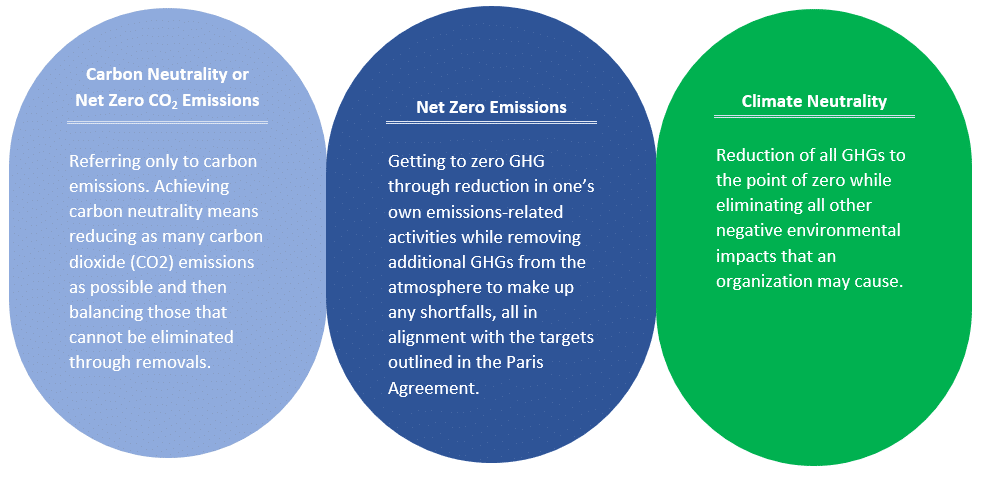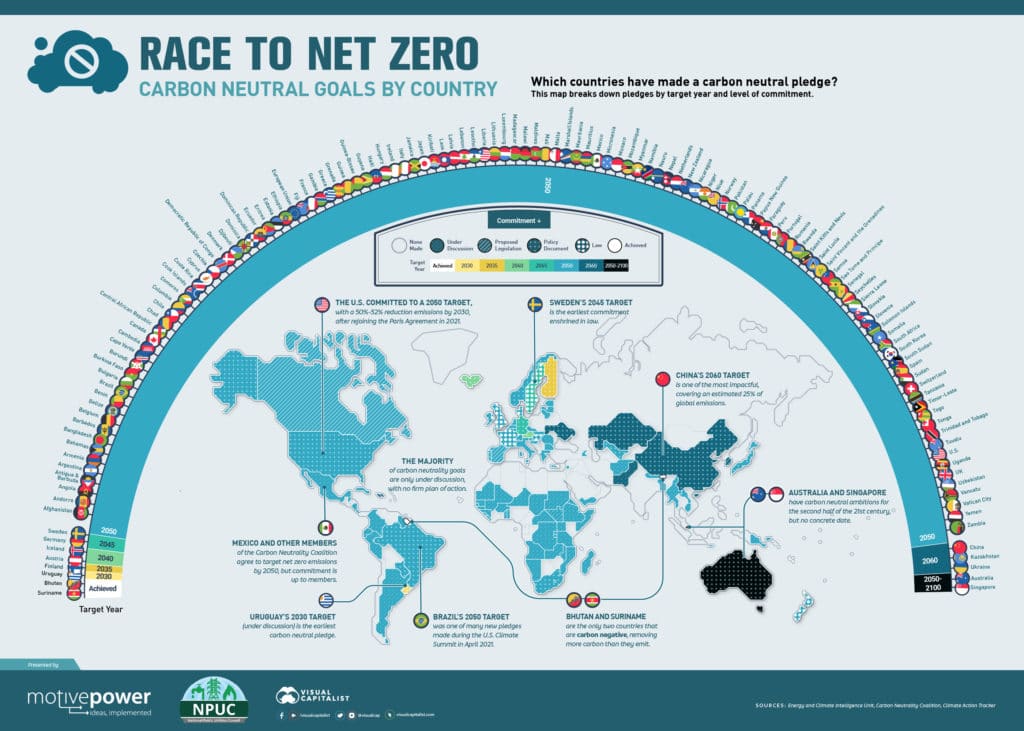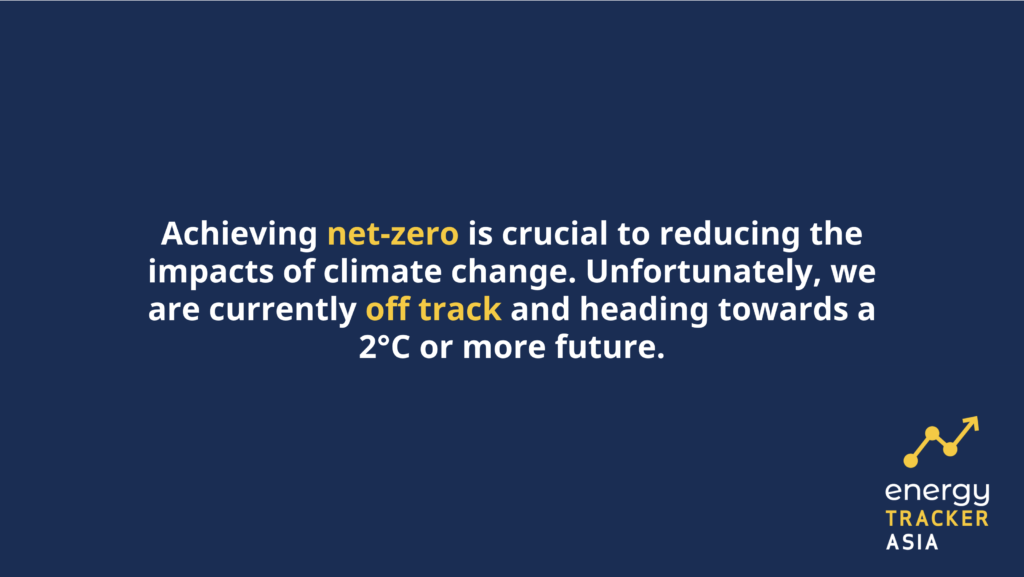Net-Zero Emissions: Cutting Generation and Increasing Offsets
06 April 2022 – by Eric Koons
The effects of climate change are becoming more apparent, spurring nations to develop net-zero emissions plans. Having net-zero emissions is a state where the greenhouse gases produced by human activity are cancelled out by the amount of these gases that have been actively removed from the atmosphere. Countries must adopt energy efficiency and work toward a fast energy transition to reach net-zero while also decarbonising the transportation sector to fight against global warming.
What Does ‘Net-zero Emissions’ Mean?
Net-zero emissions mean achieving a balance between the production of greenhouse gases and how much it removes from the atmosphere. This requires a two-pronged approach: finding ways to reduce initial greenhouse gas emissions and implementing strategies to remove unavoidable carbon dioxide emissions.

Greenhouse Gas Emissions of different Industries
Net-zero emissions represent a substantial shift in global economies, and many industries will be more impacted than others. For example, industries that produce a physical product tend to have long and energy-intensive supply chains. On the other hand, information technology has a significantly lower carbon footprint.
But, regardless of the industry, national net-zero emissions target requires collaboration across all facets of the economy. As such, net-zero targets need cooperation and partnerships from industry stakeholders to transform their operations into low-carbon versions of themselves.
What Does ‘Net-zero Carbon Emissions’ Mean?
In practice, net-zero carbon emissions mean finding opportunities within supply chains to reduce carbon outputs. It involves becoming more efficient in development, energy, and transport.
Furthermore, it requires countries and corporations to create offset programmes and other carbon capture projects. Some examples include carbon capture storage (CCS) developments, like those seen in Iceland and Australia, and other movements to replace fossil fuel energy and transportation with renewable options.
Determining total emissions production can be difficult, but governments are focusing on reducing greenhouse gas emissions as much as possible to balance their carbon budgets appropriately.
Are Any Countries Already at ‘Net-Zero Emissions’?
So far, three countries have reached net-zero emissions: Bhutan, Suriname and Panama. Also, several nations are close to achieving this balance, like Uruguay and Finland. Overall, 137 countries have pledged to achieve net-zero emissions. While most have their targets set for 2050, larger developing economies like China and India have set their goals for 2070.
Countries are not alone in wanting to achieve net-zero and become carbon neutral; the private sector is also making an effort to reduce greenhouse gas emissions. Several private sector companies have much faster targets, like Microsoft, which will be carbon negative by 2030.

Why Is Achieving Net-zero Emissions Important?
Achieving net-zero is crucial to reducing the impacts of climate change in the future. Greenhouse gases contribute to warming the planet, disrupting the Earth’s environmental processes. It exacerbates natural cycles and creates dangerous ecological events.
Scientists have determined that limiting warming to 1.5°C by 2100 would reduce the odds of catastrophic climate change. Unfortunately, we are currently off track and heading towards a 2°C or more future. Therefore, countries have taken to setting net-zero emissions to achieve the 1.5°C goals to mitigate the worst consequences of climate change. However, to reach this target, net-zero must be reached by 2050.

The Future of Net-Zero Emissions
Many nations are tapping into their natural environments to reach their goals. Both Suriname and Uruguay have extensive forests that act as carbon sinks, while other countries such as Costa Rica have sizeable renewable energy sources. Leveraging natural resources and ecosystems will help with reaching net-zero by 2050. Additionally, transitioning away from fossil fuels and creating more efficient supply chains has a critical role to play to reduce global carbon emissions. Once a country achieves the net-zero target, it can then take the next step of becoming a carbon-negative economy. Net-zero is the first step towards a more environmentally friendly future, and we must work together to make it a reality.
Go further with Net-Zero
This article is part of our ultimate guide about Net-zero.
We will discuss more related topics in the following articles, such as Net-Zero Energy Buildings.

by Eric Koons
Eric is a passionate environmental advocate that believes renewable energy is a key piece in meeting the world’s growing energy demands. He received an environmental science degree from the University of California and has worked to promote environmentally and socially sustainable practices since. Eric’s expertise extends across the environmental field, yet he maintains a strong focus on renewable energy. His work has been featured by leading environmental organizations, such as World Resources Institute and Hitachi ABB Power Grids.
Read more